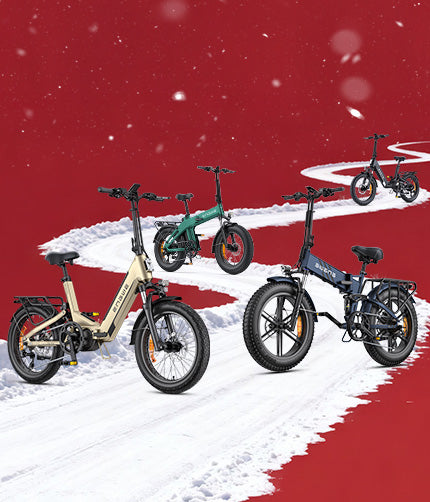The Legal Domain of Electric Bikes
Understanding the Legal Framework for Electric Bikes: The most crucial aspect of running a legal dual motor electric bike concerns the comparative power and speed. These change dramatically based on your place of residence. For example, in the United States, e-bikes are commonly classified under three separate specifications, all of which hold effect on the board. A dual motor configuration can easily push an engine too far over these limits. In order to be considered “legal for street use”, the typical situation is that they begin with one of these classes from the manufacturer, which they accomplish by using an electronic limiter.E-Bike Classifications
- Class 1: Pedal-assist only with a maximum assisted speed of 20 miles per hour. The motor engages only when you pedal.
- Class 2: Throttle-assisted, with a maximum motor-powered speed of 20 mph. The motor can also be engaged via a throttle without pedaling.
- Class 3: Pedal-assist only, with a top assisted speed of 28 mph. It takes over once you start pedaling, automatically turning off after the motor reaches a maximum speed of 28 mph.
Power Limitations
The most common federal power limit for power assistance is 750 watts. This model has two 500-watt motors, meaning it has a combined potential of 1000 watts. Therefore, the bike technically exceeds this limit.Regional Variances
European Union laws are far harsher compared to the North American model. They typically limit e-bikes to 250 watts of continuous power and an assisted speed of no more than 25 km/h.Key Takeaway
Therefore, the most crucial step to take before buying is researching your particular state and city ordinances. Many manufacturers sell bikes such as the Top-Bike with a note saying the full power is for “off-road use only.”The Dual Motor Dilemma: Power or Powerlessness?
Benefits of Dual Motors:
- Superior traction: Putting power to both wheels provides superior traction, even on loose surfaces such as gravel, sand, and snow, where a single wheel might slip.
- Better hill climbing: Two motors create twice the torque, making climbing steep hills a breeze.
- Faster acceleration: Instant power delivery, either with quick pedaling or twisting the throttle, provides a fun and thrilling ride.
How manufacturers ensure compliance:
Motor selector switch: Perhaps the most crucial feature. This can be a physical switch on the bike or a setting on the bike’s digital control panel. A rider can use one motor on the street and stay under the 750-watt limit, and off-road by using dual motors if the bike is capable.
Pre-programmed power modes: Available settings can each limit the total power output and top speed of the bike, adjusting it to a Class 2 or 3. Bikes have an “off-road” mode, a.k.a. “unlocked” or “full-power.”

Fat Tires: The Advantage for All-Terrain Dominance
Fat tires, usually 4.0 inches wide or more, are a signature feature of high-powered e-bikes. But it’s not just for show; it's the key to the bike’s performance and extraordinary versatility when using a dual-motor system. These tires give the bike an incredibly stable and comfortable experience. The large area of contact allows it to traverse kinds of terrain that other electric bikes can’t imagine doing.A powerful natural suspension and increased stability come from a set of suitable tires. The ENGWE M20 uses a fat tire, a popular choice among electric bike riders, even though they might seem out of place on a city road. The critical attributes of fat tires are as follows: all-terrain capability, natural suspension, and enhanced stability. While fat tires allow the rider to “float” over sand, mud, or snow due to the wide footprint instead of sinking in, this is not the only benefit of off-road performance. The broader base also provides more balance, which is essential for beginners or bumpy roads as you may lose balance less frequently. Riders using the fat tire are capable of running on much lower air pressure. For example, you can use 13.5 in the front and 15 in the back as measured in PSI. As a result, the tire loses the bumps from the road as it becomes part of the suspension system itself. Despite some of the benefits, fat tires also bring some drawbacks, including weight and resistance, and road handling.
Unmatched Comfort and Control: The ENGWE M20


How to Find and Vet a Dual Motor E-Bike
If you’re on the market for a real dual motor e-bike, the power of information is crucial. The dual motor concept is becoming increasingly popular, and many businesses appear to provide this option. However, it is critical to look beyond the promotion and evaluate the specifications precisely to ensure that the e-bicycle can be operated wherever it is intended. The operating conditions should be validated by examining the manufacturer’s claims and being familiar with the characteristics of the specific e-bikes.Checklist for Buyers:
- Verify Local Laws First: This cannot be overstated. Go to your state’s DMV website, your city ordinances, and check for e-bike regulations based on power and speed.
- Scrutinize Bike Specs: Look for a clearly labeled motor selector switch. In addition, make sure the manufacturer displays a “nominal” power rating of a single motor within legal limits (e.g., 750W).
- Read In-Depth Reviews: Searching e-bike forums along with YouTube is a must. Most reviewers will operate the bike in its various power modes, discussing if it’s street-legal at all.
- Look for Transparency: All modes for “off-road use only” in any reputable and transparent brand. If a seller claims a 1000W+ bike is perfectly street-legal to ride anywhere with no restrictions, they are lying.
Examples of Dual Motor Fat Tire E-Bikes:
Below are listed some of the notable mentioned models for the dual motor. Make sure to double-check all these features and the legal compliances before making a purchase.| Model Example | Combined Motor Power (Peak) | Top Speed (Unlocked) | Key Compliance Feature |
|---|---|---|---|
| Eunorau FAT-AWD | 1500W (750W+750W) | ~30 mph | Front/Rear/AWD Selector Switch |
| Addmotor M-81 | 1250W (750W+500W) | ~28 mph | Programmable Speed and Power Limits |
| Rize Bikes Blade 2 | 1500W (1000W+500W) | ~34 mph | Single/Dual Motor Mode Selector |

Frequently Asked Questions
Q1: Can I make my overpowered dual motor e-bike street legal?
A: Yes, by using a built-in feature, such as a motor selector switch, built-in circuitry power-limiting operation mode that restricts the bike’s power output and top speed to make it compliant with your state’s class 1, 2, or 3 regulations.While a dual motor does allow for more inherently, the truth is a bit more complicated. Yes, when both motors are running, power consumption is considerably higher. This is exactly why having the choice of only using a single motor is important to save battery and increase your range for longer trips. While much is also relative, in the present context, this usage defines a broad frame. Yes. For one, the second motor with the double processing power and more robust frame is naturally heavier, and usually, you are left with a larger battery pack as well. Beach Cruiser electric bikes on the other hand tend to be much heavier, so much harder to lift and transport safely while some bike racks have sufficient load capacity. When it comes down to it, you want to get the most out of having so much power while still being able to use one motor most of the day. Ultimately, you want the best of both worlds, the most power, and responsible, legal riding.









